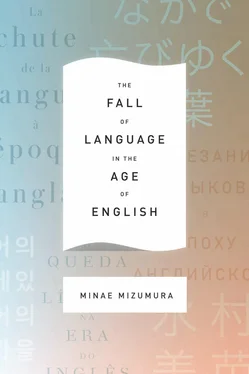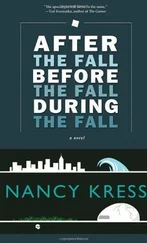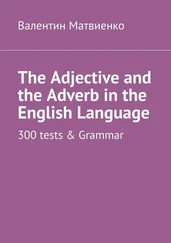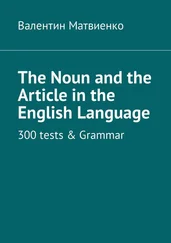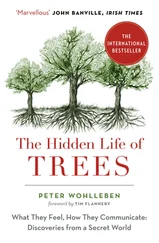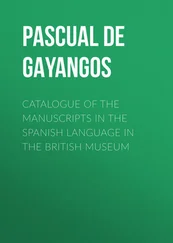MINAE MIZUMURA, NOVELIST
In Japan, the book made a special impact partly because of its author, the acclaimed novelist Minae Mizumura.
Born in Tokyo in the 1950s, Mizumura moved with her family to Long Island, New York, at the age of twelve. Even though she lived in the United States for the next two decades, she never came to feel quite at ease there, and she spent her teenage years yearning for home while absorbed in stories from a sixty-three-volume collection of modern Japanese literature — an experience that forever shaped her sensibilities about language and literature. She studied French literature and literary criticism at Yale, both in college and in graduate school, during its heyday as the center of literary theory; her first publication was a much-praised critical essay in English on the central and controversial theorist Paul de Man. 1Yet she never considered a career in academia, and she returned to Japan to devote herself to doing what she had always wanted to do — write fiction in her native language.
From the first, Mizumura has played with ideas of language, literature, and translation in her fiction, returning repeatedly to the question: What does it mean to read and write in the Japanese language — or any language other than English — in the world today? In her debut novel, Zoku meian (Light and dark, continued, 1990), she daringly and mischievously completed the final, unfinished work of Natsume Sōseki, the titan of the modern Japanese novel, perfectly capturing his idiosyncratic style. Her second novel, Shishōsetsu from left to right (An I-novel from left to right, 1995), was equally but differently audacious. Written as a fictionalized autobiography, a long-cherished genre in Japan, the text is interwoven with English and printed horizontally — marking the first time that a work of Japanese literature was printed in this way, “from left to right.” Her third novel, A True Novel ( Honkaku shōsetsu , 2002) — available in English — is an imaginative tour de force, a complex, multi layered retelling of Emily Brontë’s Wuthering Heights . In it, she follows in the footsteps of earlier Japanese writers by basing her work on a Western classic while bringing the extraordinary romance home for Japanese readers. Translations have been published in French, Spanish, Chinese, and Korean as well as English. Mizumura’s most recent novel, Haha no isan — shinbun shōsetsu (Inheritance from mother: A newspaper novel, 2011), was, as indicated by the title, originally serialized weekly in a major newspaper. Narrating the saga of three generations of Japanese women, the first of whom tragicomically identifies herself with a heroine in a newspaper novel, the work highlights the role that such novels played in the formation of the modern Japanese language and psyche. Each of Mizumura’s novels has won a distinguished literary prize: Zoku meian won the Minister of Education Award for New Artists; Shishōsetsu from left to right , the Noma New Author Award; A True Novel , the Yomiuri Prize for Literature; and Haha no isan — shinbun shōsetsu , the Osaragi Jirō Award.
Precisely because Mizumura keeps returning to the question of what it means to read and write in the Japanese language, examining the traditional in highly unconventional ways, her novels have a unique attraction for Japanese readers while posing unique challenges for the translator. For instance, the intermingling of English and Japanese in her fictional autobiography cannot possibly have the same effect in languages using the Roman alphabet. That novel also inserts vertical printing amid the horizontal text and mixes different typefaces and modes of notation, new and old, for different effects. The difficulty — or impossibility — of translating her novels is undeniable; yet, resisting any temptation to write in a more transparent style, she has continued to stimulate and amuse her readers (and herself) by producing works of literature that evoke the path that written Japanese has traveled. Why she does so will become clear in The Fall of Language in the Age of English .
THE FALL OF LANGUAGE IN THE AGE OF ENGLISH
In this, her first nonfiction book, Mizumura discusses the same issues she has grappled with as a novelist. She takes a critical look at the phenomenon of the English language functioning as the singular universal language today, in the digital era, and what this means for national languages and literatures of the world. The effects of English supremacy, though vaguely acknowledged, have nowhere been so lucidly and mercilessly examined as in this book. The fact of English supremacy is something most native speakers of English unknowingly suppress, all the while enjoying the privileges that come with it. Many non-English-speaking populations, however, cannot afford to suppress that fact but are forced to face it in one way or another, though their writers generally turn their backs on the linguistic asymmetry lest they end up too discouraged to write, overwhelmed by the unfairness of it all.
Mizumura opens with an engaging account of her experience in the International Writing Program at the University of Iowa in 2003. Through sometimes humorous, often touching encounters with authors from around the world, she begins to consider the meaning of “national literature,” especially literature being written in non-English languages. She next turns her attention to French, a language she herself spent years studying. She reflects on her own relationship with Japanese, English, and French to shed light on a recent historical shift by which French, once the world’s reigning language, was reduced to being merely one among many. At the core of this section is a talk she gave in French in Paris, slyly urging the French audience to confront the deplorable downfall of their language. It is a delightful read — unless you happen to be French.
From there, Mizumura traces the development of the hierarchy of languages using three core concepts — universal language, local language, and national language. Building on Benedict Anderson’s now-classic Imagined Communities (1983), and revealing a critical blind spot in his analysis, she provides insight into what a universal language truly is. The highlight of her analysis rests on her focus on the role of translation — an endeavor little understood or appreciated in the modern era. According to Mizumura, it was the very act of translation from the universal language into various vernaculars that gave birth to national languages and literatures.
Then she contemplates a miracle: nineteenth-century Japan’s production of an extraordinary corpus of modern novels shortly after opening its doors to the West, despite geographical, cultural, and linguistic constraints. In aggregate, these novels are now counted among the major literatures of the world. Mizumura devotes an entire chapter to a groundbreaking analysis of Sōseki’s bildungsroman, Sanshirō (1908).
Next her examination of English as today’s universal language challenges the naïve celebration of the Internet as the conveyer of global knowledge. She cautions that the act of acquiring knowledge is wholly dependent on the language one knows. The less English one knows, the less access one has to global knowledge. This leads more and more people in the non-English-speaking world, especially those whom she calls “seekers of knowledge,” to be drawn into the “universal” world of English, possibly leading to the impoverishment of their own language — an outcome that would, in turn, assuredly lead to the impoverishment of the entire human race.
In the final chapter, Mizumura begins by reflecting on the possible future of various languages, Western and non-Western alike. She then takes the reader to a specific period in Japanese history, the years following the defeat in World War II, and the detrimental effect that period had on Japanese language and literature. Her account of how the war and the American occupation affected the nation’s written language will surely come as a surprise to many readers, as will her description of the current sorry state of language arts education in Japan. The book closes with suggestions for major policy changes in the nation’s education system.
Читать дальше
